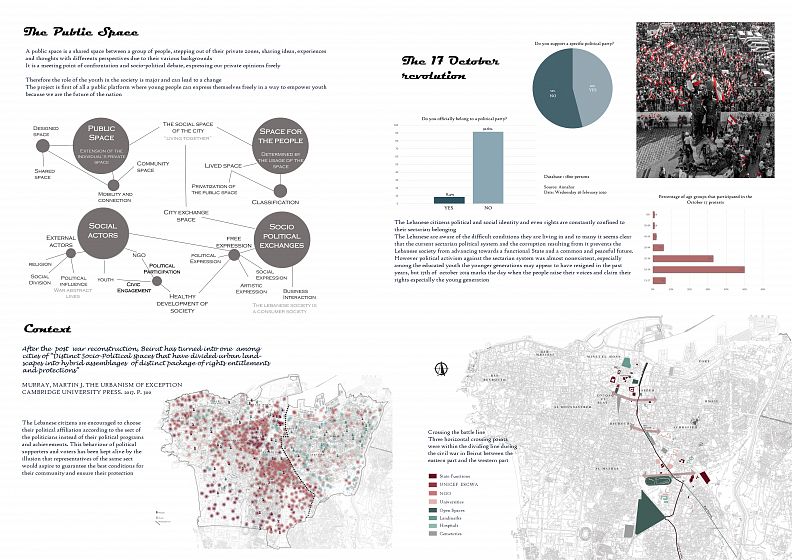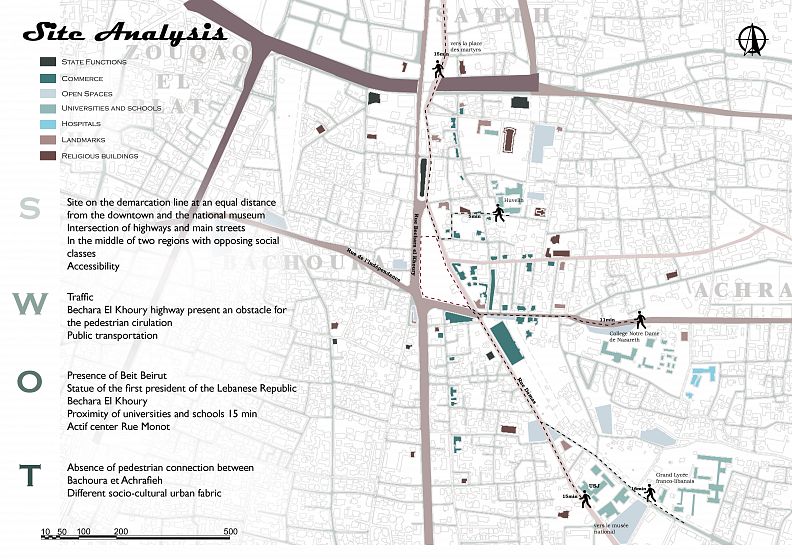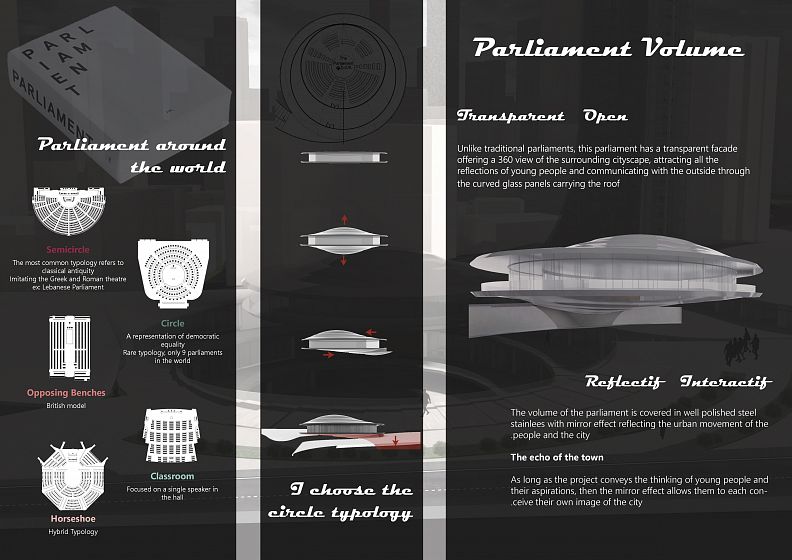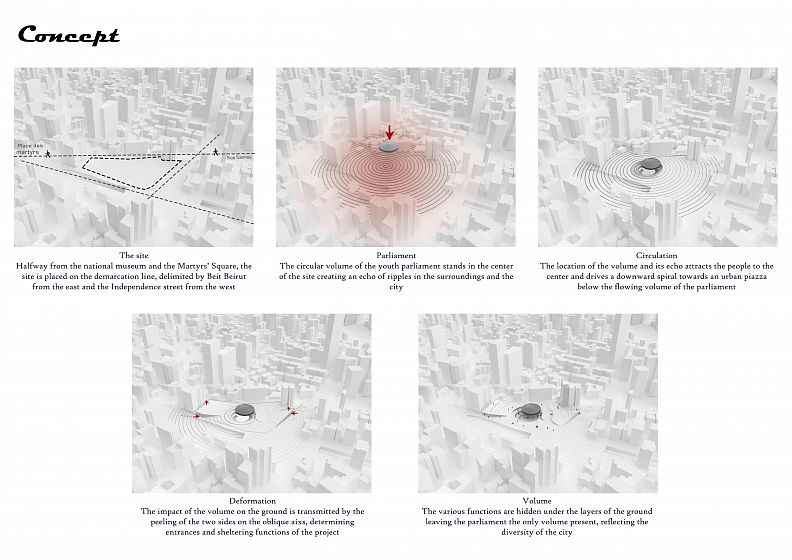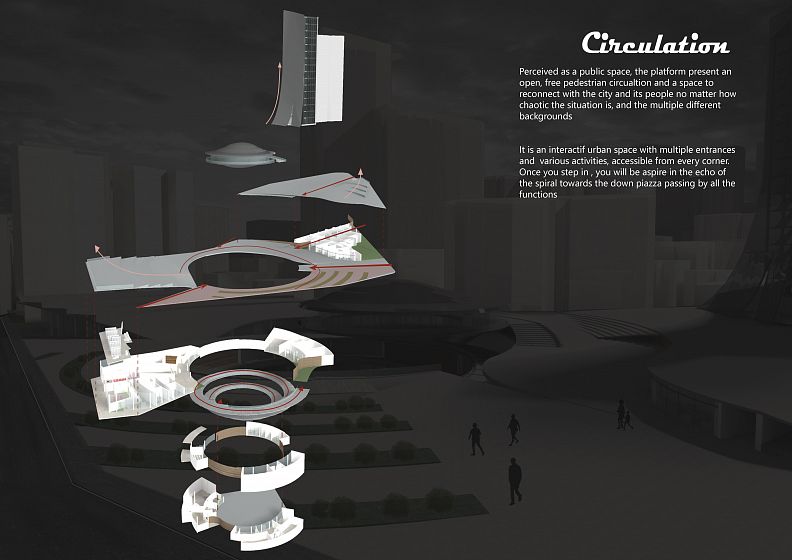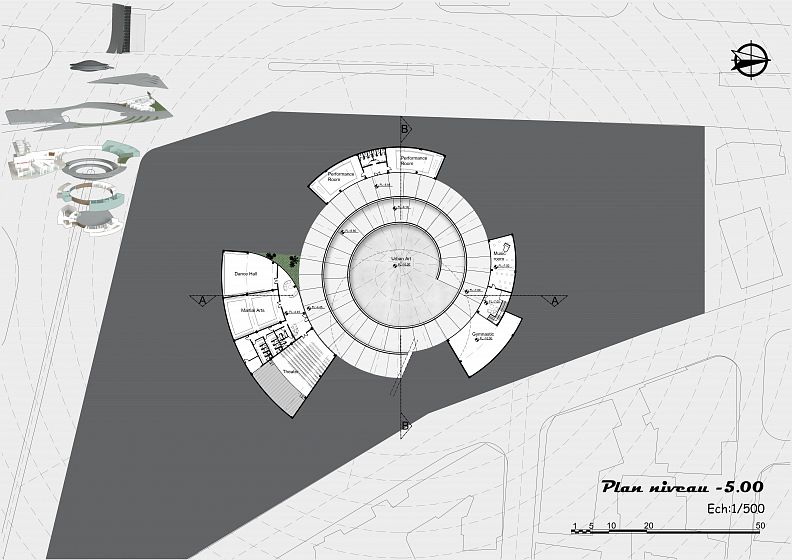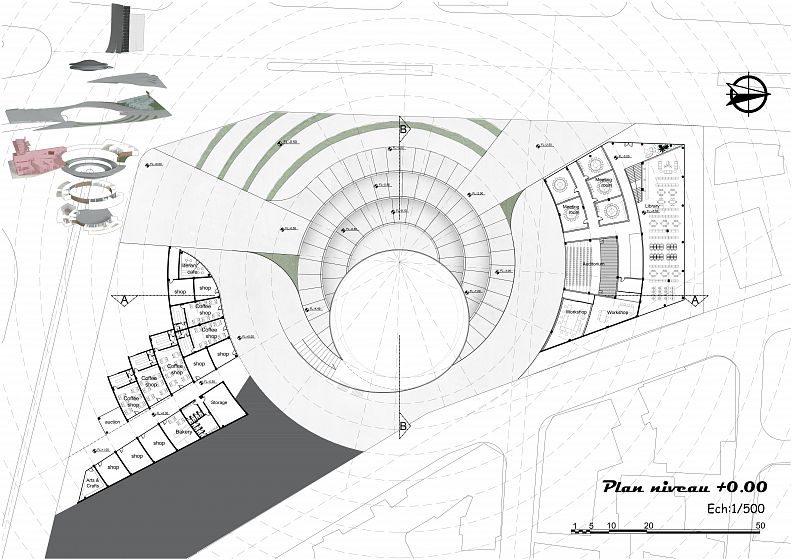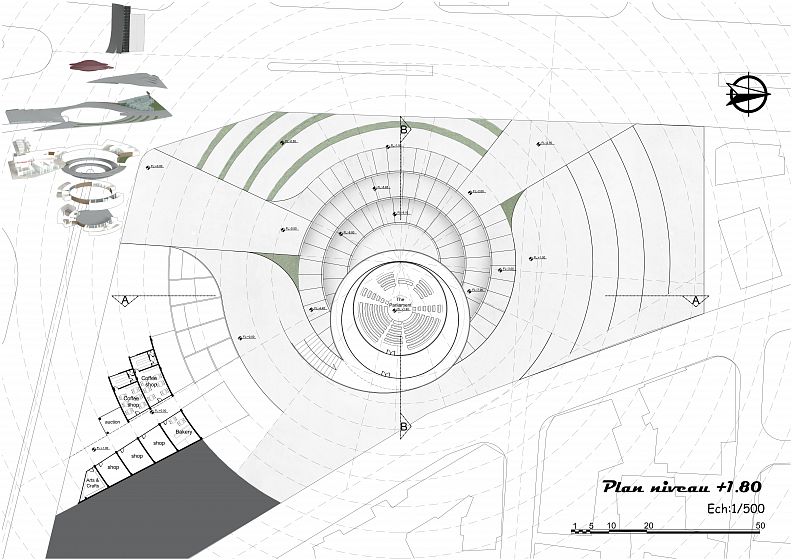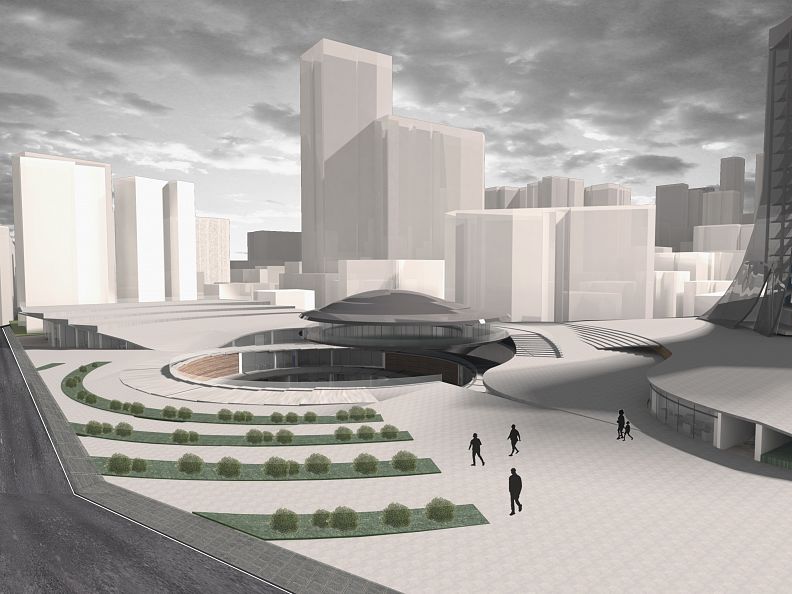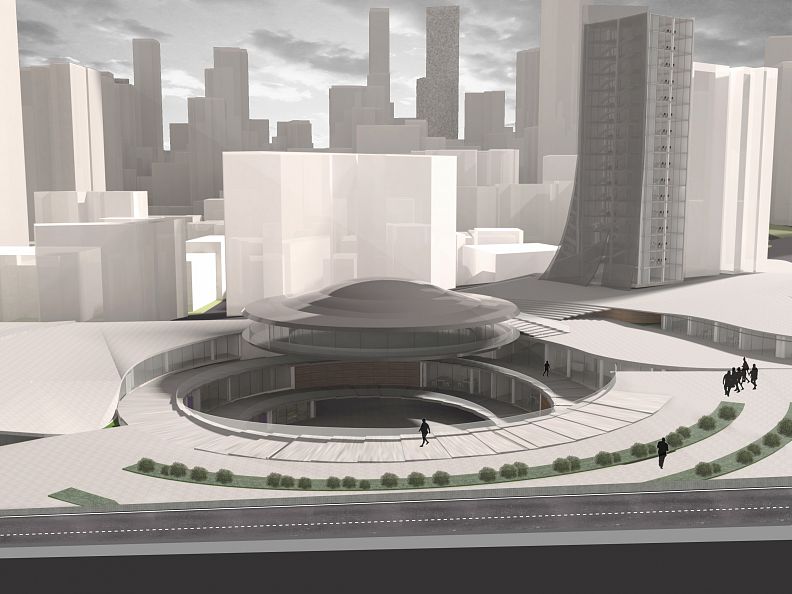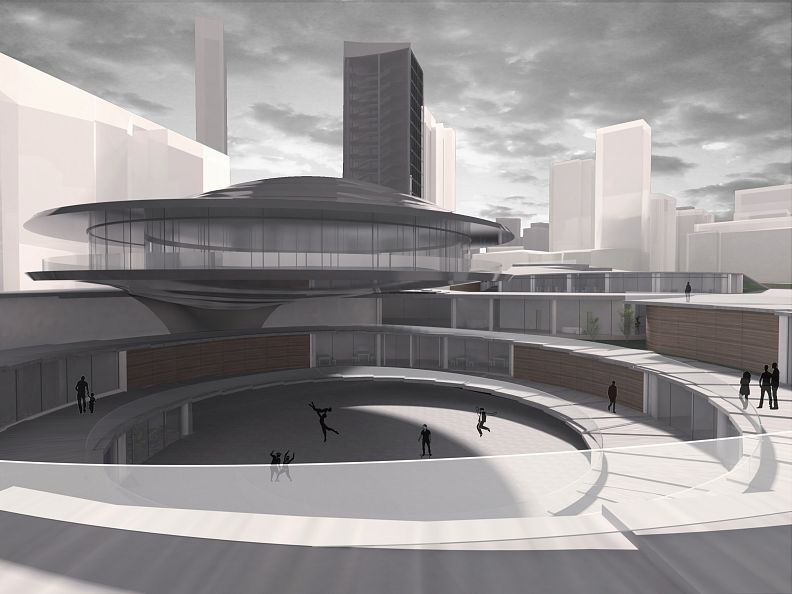The Youth Parliament

Project idea
Nowadays the urban public space is suffocating under the pretext of urbanization, this decrease suffocates the city itself because public space is the lung of the city. Public space is an extension of private space, a space for interaction with others, even the one I don't know. The capital Beirut has a very small percentage compared to green and public spaces, even the street which is the first public space encountered by the individual, the capital has abandoned it for a street of cars.
Public space evokes the place of political debate, the confrontation of opinions, a form of communication and the circulation of various points of view with freedom. Freedom of expression marks the peak of civilization and marks a healthy society which, despite its differences, lives in peace.
Being the generation of tomorrow, the participation of young people in the political society by expressing their opinions and concerns freely and objectively can by far mark the start of socio-political change in society.
So the project aims to give the young generation a parliament and a space where they can express and exchange ideas, make their voices heard for a better tomorrow.
Project description
On October 17, 2019, the people and especially the young people ravage the streets of Beirut demanding their primary rights, and taking back the street their first public space in which they can express themselves freely. The majority of young people refuse to remain under the dress of political parties and religion, and refuse to live in the shadow of the memories of the civil war. A war that divided Beirut in two, drawing a line that is still present in the people's unconscious.
However, three horizontal crossing points were on the demarcation line during the war. As long as the project is aimed at young people, the site will be on the point of intermediate passage in a fabric rich in educational establishments and halfway between the Martyrs' Square and the national museum, near Beit Beirut, a witness of the war always present.
Several international and local initiatives opt to engage young people in the socio-political development of their society through youth parliaments. After a quick view of the types of parliaments around the world declares the circular form, that I choose, a form of pure democracy and communication in opposition to the semi-circular form inspired by the classical antiquity theater where there is an actor on stage and passive spectators.
The volume of parliament, unlike traditional parliaments, is transparent and open to the city, aspiring and inspiring new generations towards objective reflection.
This volume is placed in the center of the site in a movement creating a wave phenomenon transmitting its echo throughout the city. This whirlwind will result in a spiral circulation aspiring young people to a place of urban art and free expression. A peeling of the ends of the ground draws the access to the hidden functions, and bleachers above to observe the urban landscape. Three sequences of functions encompass all versions of political, commercial (consumer society) and artistic (form of expression becoming popular during the October 17 protests). A seat of NGO offices emerges from the ground clinging to the blind facade of the existing building, playing an important role in providing an objective view away from political gain.
Only the mirror parliament, reflecting the young people of tomorrow and their own vision of the city, floats on the ground, which shelters the various functions between its layers.
Technical information
The parliament has a transparent facade offering a 360 view of the surrounding aspiring all reflections of the young people and communicating with the outside. This is through the curved glass panels that are carrying the roof.
The volume of the parliament is covered in well polished stainless steel plates with mirror effect reflecting the urban movement of the people and the city.

